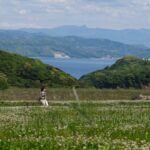Are you ready to step off the tourist trail and discover the true depths of Japan’s countryside? For the intrepid modern traveler, Japan’s forgotten “satoyama” villages offer a rare glimpse into a lifestyle harmoniously balanced between people and nature. In 2025, these rural communities are experiencing a renaissance thanks to satoyama glamping and immersive local experiences. From thatched roof farmhouses to hands-on traditions with locals, dive with us into hidden Japan and find out why its rustic heart is one you’ll want to explore for yourself.
What is Satoyama? Unveiling the Charm of Japan’s Forgotten Villages
Satoyama, literally meaning “village mountain,” refers to the mosaic-like rural landscapes found between flat farmland and uncultivated mountains across Japan. Traditionally, these areas existed as a seamlessly integrated zone, where forests, rice paddies, streams, and small settlements supported and depended on each other. This connection fostered a unique rural culture—a slow-paced way of life based on respect for the land and community collaboration.
However, Japan’s rapid urbanization has left many satoyama villages deserted, sometimes nicknamed “forgotten villages.” Old wooden houses and terraced rice fields now stand silent as a testament to traditions fading away. Recently, though, a wave of interest in nature, sustainability, and authentic travel is breathing new life into these landscapes, attracting both domestic and international travelers eager to discover a purer, quieter side of Japan.
The Satoyama Renaissance: Glamping & Rural Experiences Trending in 2025
Why are travelers flocking to satoyama in 2025? The rise of glamping (glamorous camping) in Japan is perfectly matched to these tranquil settings, allowing visitors to enjoy luxury tents or revitalized farmhouses surrounded by pristine nature without sacrificing comfort. This trend appeals to young Japanese urbanites and global adventurers seeking both Instagrammable moments and deeper cultural connection.
Seasonal activities—like forest bathing (shinrin-yoku), stargazing, and firefly watching—are perfectly complimented by locally sourced gourmet meals cooked over open fires. As Wi-Fi quietly slips into the background, visitors reconnect with the rhythms of dawn and dusk, forging memories not just of beautiful places but meaningful moments shared with others and the land itself. Satoyama glamping is the epitome of “experiential” tourism in Japan this year, offering rest, reflection, and rare insight into regional heritage.
Must-Visit Satoyama Glamping Spots: From Shirakawa-go to Hidden Mountain Retreats
Across Japan, pioneering satoyama destinations are opening their doors in 2025. Here are a few unforgettable spots to consider for your rural retreat:
Shirakawa-go (Gifu Prefecture): This UNESCO-listed village, famous for its steep thatched roofs, now offers special glamping stays in restored gassho-zukuri farmhouses. Wake up to mist-shrouded mountains and the gentle sound of water wheels turning.
Nagano’s Hidden Highlands: In the secluded mountains of Nagano, small hamlets like Tsumago and Narai welcome guests to eco-lodges and luxury tents, facilitating guided hikes, forest tea ceremonies, and homemade soba workshops.
Tokushima’s Mountain Villages: Deep in Shikoku, Iya Valley and other remote settlements invite visitors for canyon walks, bathing in natural hot springs, and staying in thatched-roof minshuku, where dinner is prepared with herbs foraged that day.
Each region offers unique blends of nature, tradition, and state-of-the-art comfort—perfect for nature lovers, culture explorers, and anyone longing for a slow-paced, story-rich Japan.
Authentic Encounters: Rural Hospitality & Traditional Hand-on Experiences
Perhaps the richest reward of satoyama travel is the chance to interact with local residents, who are deeply rooted in the rhythms of their environment. Many glamping and guesthouse operators organize participatory activities—from rice planting and vegetable harvesting to learning the art of pickling vegetables or making miso the old-fashioned way. Join in for breakfast using eggs gathered that morning, try your hand at weaving bamboo baskets, or sit down to a dinner of char-grilled river fish beside the residents.
Don’t miss the opportunity to experience rural festivals. Whether it’s a summer Obon dance under the stars, a springtime cherry blossom celebration, or autumn’s harvest moon viewing, guests are welcomed not just as spectators but as part of the community.
These heart-to-heart encounters open a window into Japanese rural lifestyles seldom seen by outsiders—and provide lifelong memories that transcend language or cultural barriers.
Sustainability & Respect: The Heartbeat of Satoyama Tourism
As more visitors flock to Japan’s satoyama, the communities leading the revival are deeply committed to sustainable tourism. Many sites operate on small scales, use solar power or biomass heating, and ensure tourism revenue supports local crafts, agriculture, and forest conservation. Guests are encouraged to minimize waste, support local food producers, and move gently through the landscape to preserve its fragile biodiversity.
As a traveler, embracing the wisdom of “leave no trace” and respecting both people and place is essential. Engage openly but humbly, be mindful of noise and privacy, and always seek to deepen mutual understanding. Satoyama’s future depends on balancing accessibility with authenticity and environmental care.
The return of rural Japan is a story being written not only by its residents but by those who choose to visit with open hearts and conscientious spirit. Will you be among them, answering satoyama’s quiet call in 2025?








